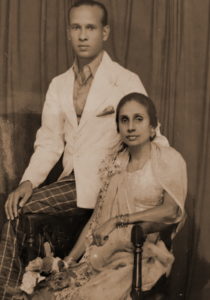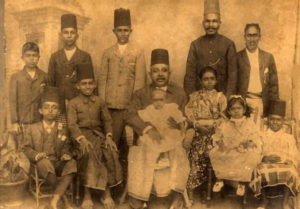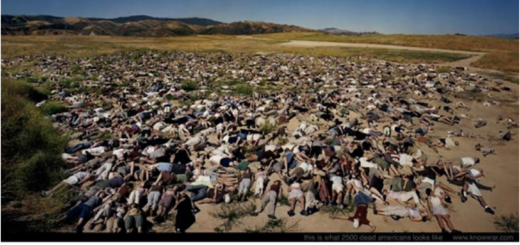How did traditional Muslims of Sri Lanka become influenced to adopt a new cultural ideology?


Following the Easter Sunday suicide bombings and the discoveries of islandwide weapons and arrests, the people of Sri Lanka after recovering from the initial shock began looking for answers. They began asking what is Islam, why did rich & educated Muslims want to kill, how did a primarily business oriented community become radicalized & extremists. They began to also identify areas that were common factors disuniting the communities because of the privileged and inequality of status given. Sri Lanka was only now witnessing the spill-over effect of changes that had been subtly executed among Sri Lankan Muslims since 1980s that roped in a traditional Muslim community interested in trade & business to be associated with religious extremism bordering violence. The world’s Muslim population is 1.8billion, if 1% of that were just radicals & not terrorists that would make 18million radicals globally & highlights the importance of crushing the ideology that spreads radicalism bordering terror. Studies show that 10% of world Muslims fall into religious extremist category.
What is Islam – Wahhabism
Islam is the religion of Muslims founded by Prophet Mohammed (570-632AD) (7th century) followed by 1.8billion Muslims who account for 24% of world population.
Sunni’s comprise 87% global Muslims while Shias comprise 10% of global Muslims.
Global Sunni population is estimated to be 1.5billion
Global Shia population is estimated to be 200m
Sunni Muslims are influenced by Saudi while Shias are influenced by Iran.
Saudi & Iran are the 2 key countries promoting Islam globally. While Iran has a long history, Saudi kingdom was created by the British in September 1932 and was to function as West’s ally in the Middle East while also being custodian of Islam’s holiest shrine in Mecca & Medina. Saudi oil was found in 1938 by US company ARAMCO which Saudi bought over in 1988. Revenue from oil fueled the spread of Islam globally & has turned the world up-side down & made Middle East into a battle zone.
Mohammad ibn Abd-al-Wahhab is the founder of Wahhabism in the 18th century and is the doctrine followed by Saudi. There is difference of opinion in Wahhabi Muslims and Sunni Muslims but Wahhabism essentially denotes war.
Understanding the Geopolitical landscape
- Rivalry between Saudi & Iran for power in West Asia & for Islamic expansionism
- West/Zionists using rivalry to devise masterplan to divide Muslims via Wahhabi Islam & sects for proxy wars
- Geopolitical tussle between US-West-Saudi & allies against Syria-Iran-Russia & allies & its impact on other countries.
- West-created Islamic militants revolting against master after realizing West was playing double games (each time a group revolted a new group was created & exported to destabilize countries drawing new Muslim recruits)
- ISIS/ISIL – new caliphate declared by leader Baghdadi in June 2014 covering even South Asia & Sri Lanka.
Muslims of Sri Lanka
Sri Lanka’s Muslims are descendants from Saudi who initially came to India’s southern coast & thereafter to Sri Lanka’s coastal belt for trade & later allowed to settle down by the Sinhale kings.
Sri Lanka’s Muslim make up 9.7% of total population out of which 98% of Sri Lanka’s Muslims are Sunni while 1% of Sri Lankan Muslims are Shia and 1% are Bohras. Sunni’s are further divided as Moors & Malays with Malays numbering around 40,000 and descendants of Sunni’s from Malaysia & Indonesia. Malays are the most moderate group of Muslims living in Sri Lanka.
The global feud & sectarian wars between Sunni’s and Shia’s naturally had an influence on Sri Lanka’s Muslim community.
While Saudi objective was to expand its global reach, the West was using Saudi to ensure Muslims were divided & within their control.
ACJU – 1924
The All Ceylon Jamiyyathula Ulama created in 1924 to look into the interests of Muslims which originally had no external links & restricted its activities to looking at the moon for Muslim festivals & taking care of general Muslim interests was selected as the tool to drive the new ideology among Muslims.
Traditional Muslims & Sri Lankan Culture before 1980s
The Muslim population lived as Sri Lankans, adopted Sinhala culture while following Islam. More importantly upto 1980s there were no madrassas, no Shariah law, no burka, no niqab, no organization dictating to Muslims to pray 5 times a day, no religious preachers were going in & out of Sri Lanka.
Cultural changes after 1980s & role of ACJU
- Saudi petro Islam influence spilled over to Sri Lanka by 1980s during a period that Tamil leaders declared Vaddukoddai Resolution in 1976.
- Global players identified Muslims – politicians, academics, media, public/private sector, youth etc to be roped in to drive their new religious dogma baiting Muslims to accept a new version of Islam ideology as part of global drive for Islamic expansion..
- Sri Lanka Muslim Congress created by M H M Ashraff in September 1981.
- ACJU being the body tasked to look into interests of Muslims it was only natural that majority of Muslims began to unquestioningly adopt to the new ideology.
- “Cultural change” in Muslims began with the introduction of ‘Thablique Jamaath” – introduction of niqab, establishing shariah law, madrassas, mosques, polygamy (marrying 7 women), halal labeling, Islamic banking FMG resulting in more than 50% of Muslims adopting ‘Thablique’ ideology. Soon Sri Lanka’s Muslims became divided using Islam’s own religious texts. New rules NOT inside Quran were being promoted to control Muslims and marginalized Muslims unwilling to accept them. Many Muslims who realized these new rules did not conform to that of the teachings of Mohammad Nabi were chided and ridiculed.
Sri Lanka’s security apparatus did not initially see the dangers as its concentration was on LTTE and probably this period was selected to ground the new Islamic ideology for this reason.
Mid 1990s: Creation of ACTJ
Moulavi Mubarak founded All Ceylon Thawfeek Jamaath (ACTJ) and a small segment of ACJU became members. They adopted a more extreme religious ideology aligning with the verses of Quran relevant to the war period in Arabia. Around 4% of Sri Lanka’s Muslims follow ACTJ ideology (around 76,000 Muslims)
Moulavi Mubarak is presently the General Secretary of the All Ceylon Jamithul Ulama (ACJU) – the Muslim body representing Sunni Muslims in Sri Lanka.
Growth of Thowheed Jamaath
Thowheed Jamaath then began dividing itself further into different sects based on different interpretations of Quran’s beliefs and practices all funded by foreign sources.
However, all the while Saudi had its stronghold over ACJU which was tasked to bring 200-300 preachers annually to Sri Lanka to preach Tabliq in mosques.
However, Thowheed Jamaath wanted to bring preachers from Tamil Nadu which was objected to by ACJU & Asad Salley – simply because of issues amongst their sects.
- All Ceylon Thowfeek Jamaath (ACTJ)
- Sri Lanka Thowfeek Jamaath (SLTJ)
- Ceylon THowfeek Jamaath (CTJ)
- United Thowfeek Jamaath (UTJ)
- National Thowfeek Jamaath (NTJ) formed in 2017 in Kattankudy by Zaharan became the first group to advance from religious extremism to violent religious extremism.
Battle between Muslim groups to rule over Muslims using Islam as tool
The creation of splinter groups meant threats to the existence of each group – Sufi’s who were by-products of Tabliq & Tabliq Jamaath saw new groups as a threat and began isolating the newer groups – each claiming them to be good & the other bad resulting in these groups increasing their extremism. Thus, violent Zaharan was created by their own system from 2016 onwards.
Essentially what we can conclude is each of these groups have an extremist view.
To highlight this pl listen to this video by Abdul Razick of Ceylon Thowheed Jamaath denouncing statement by Asath Salley to the PSC claiming it to be lies & trying to mislead the PSC. The video also refers to Muslim groups fighting to divide funds sent by foreign sources.
https://www.facebook.com/RasminMiscOfficial/videos/415129445748233/
June 2014: Al-Bagdhdadi leader of ISIS announces global Caliphate & requests
- Muslims to come to Syria to establish caliphate
- Muslims who could not come to continue expansionist ideology in their own countries (Easter Sunday was probably inspired by this)
- Muslims aligning with 1 & 2 were the real Muslims
- Muslims to destroy any country going against Islamic caliphate (US/West)
- Muslims to destroy any countries supporting US/West (ex India)
- Muslims to attack neutral countries (ex Sri Lanka)
Note: before 2014 no Sri Lankan Muslim went to Syria.
Sri Lanka’s intel had been monitoring Islamic ideology branching off and forming as political strategies and devised means to handle extremism since 2013.
But the new government was reeling in liberal dogma that followed a policy of denial thinking that with LTTE over Sri Lanka was normal & there was no room for extremisms.
January 2015: Rich & educated Sri Lankan Muslims embrace ideology
For the 1st time Sri Lankan Muslims became direct participants embracing ISIL ideology.
Rich & western educated Sri Lankan Muslims between 25-35years began joining.
- Nilam & his family were first to leave Sri Lanka for Syria in the second week of January 2015 (immediately after regime change in Sri Lanka)
As of December 2016, 41 Sri Lankan Muslims mostly family members had gone to Syria.
June 2015: Foreign intelligence inform of Sri Lankan Muslims fighting in Syria
Sri Lankan intelligence were quick to obtain details of the Sri Lankan Muslims who had gone to Syria
12 July 2015: Sri Lankan Muslim S Nilam (student of Trinity College) killed in Syria
The death Nilam in Syria proved Sri Lanka’s intel was right about extremisms spreading to Sri Lanka & had set up monitoring mechanisms in 2014 though after 2015 there was no political will to maintain them.
November 2015: ISIS magazine DABIQUE releases photo of Nilam hailing him as a hero.
Late 2016: NTJ formed by Zaharan in Kattankudy
Zaharan who was not a violent follower before 2015 splits from Sri Lanka Thowheed Jamaath and forms National Thowheed Jamaath in Kattankudy with a small following.
What we can conclude in summary is that
- There was no ISIL/ISIS network existing in Sri Lanka before 2015 or Sri Lankan Muslims going to fight in Syria before 2015
- Cultural changes introduced by Thabliq Jamaath since 1980s across mosques influenced by Saudi among the Sri Lankan Muslim community resulted in Sri Lankan Muslims being slowly drawn to adopt a non-Sri Lankan culture aligning to a religious identity & ideology based on different interpretations of the Quran by different Muslim religious groups formed primarily to reign over Sri Lankan Muslims using foreign funding coming to them from Middle East that was aligned to a global campaign of political Islamic expansionism.
- Traditional Muslims were being subject to cultural change – religious extremism & lastly towards violent extremism which resulted in 21/4.
- Had authorities received political will to continue to monitor Islamic extremist groups they would have been quick to pick up the departure of Zaharan to form NTJ which was the beginning of religious extremism turning violent & 21/4 could have been prevented
What Sri Lankan Government authorities need to do is to first identify the cultural change that is not only dividing the Muslims but is antagonizing non-Muslims and it is an issue that non-Muslims globally share.
- What are these extremisms
- Who are linked to these extremisms
- What roles are performed by to help advance these extremisms
- Who funds these extremisms
- How far do they exert influence politically, socially, religiously across Sri Lanka
- How many are involved in these extremisms – individuals/organizations
- Where do they operate across Sri Lanka?
Identifying the extremisms
- Existence of Shariah law
- Burka & Niqab
- Polygamy/child marriage
- Halal food labeling
- Islamic banking
- Mushrooming Madrassas/Proliferation of mosques
- Bringing preachers from Middle East
- Sending selected youth on Scholarships
- Establishment of Islamic universities
Banning is not the solution defeating the ideology is.
Who are responsible for allowing all these to enter and spread across Sri Lanka?
Is it the Sri Lanka Thowheed Jamaath? No, all these are under control of the ACJU which is highly influenced by Saudi.
So, who is responsible for the new cultural change in Muslims? Is it the Sri Lanka Thowheed Jamaath? No, from being Sri Lankan Muslims to encouraging them to embrace an Arabic culture it is the ACJU who must be made to answer & held accountable. Thus, banning groups is not the solution, nor will it provide a solution but to address who is promoting the new culture and pressurize them to answer.
The hyped up claim that Sri Lanka’s export market demands halal labelling is simply a sham because such a system did not exist earlier. Halal labelling introduced to Sri Lanka was by a company that came under ACJU. How much of money did they collect from non-Muslims? How many Muslims in the business community funded ACJU? Where did this money go to? Didn’t this money given by non-Muslims go to over 1000 madrassas that were having youth indoctrinated by preachers sent by Saudi?
ACJU controls mosques – religious bodies, they issue scholarships, they bring in preachers and they are under direct control of Saudi.
Another distinguishable fact is that all these players & associations are interlinked and connected in some way or the other. All of them unite but are in a tussle for supremacy however the religious leadership is controlled by ACJU while the political interests are peddled by Muslim politicians who are either in government / opposition or functioning separately. All of them are in some way or the other interlinked.
The blueprint followed by Saudi across countries is to expand its Sunni domination to create madrassas and draw children and youth, set up Sharia universities to which they can send preachers all with an objective to issue jihadi certificates where some get placed in public institutes, sent as diplomats, functioning as lawyers and politicians who would use state apparatus to help facilitate the overall programs. None of them work in the interest of the nation or are bothered about the nation except to help expand Sunni control over Sri Lanka incrementally creating the culture change.
How much of this landscape Muslims know, can understand, do not wish to understand or are totally ignorant, is as important as non-Muslims realizing and identifying the threat and drawing solutions to address the threat.
If everyone can come to a common understanding and acceptance of the ‘new cultural incursions’ that have antagonized non-Muslims and are also dividing the Muslims, by removing these we can take an initial step but the more important step is to clearly state what is the Sri Lankan identity and ensure that all citizens are part of that Sri Lankan identity & not following a foreign culture.
Thereafter, authorities must lay out a national plan to break the ‘ideology’ and curb followers of the ‘ideology’ via short, mid-term and long term national security strategies, political will & with international cooperation of countries suffering equal incursions & extremisms.
The task of any government is to build a national policy & program surrounding a Sri Lankan Cultural Identity eliminating new cultures that are foreign to Sri Lanka’s history & heritage and not even part of Islam as well.
Shenali D Waduge







